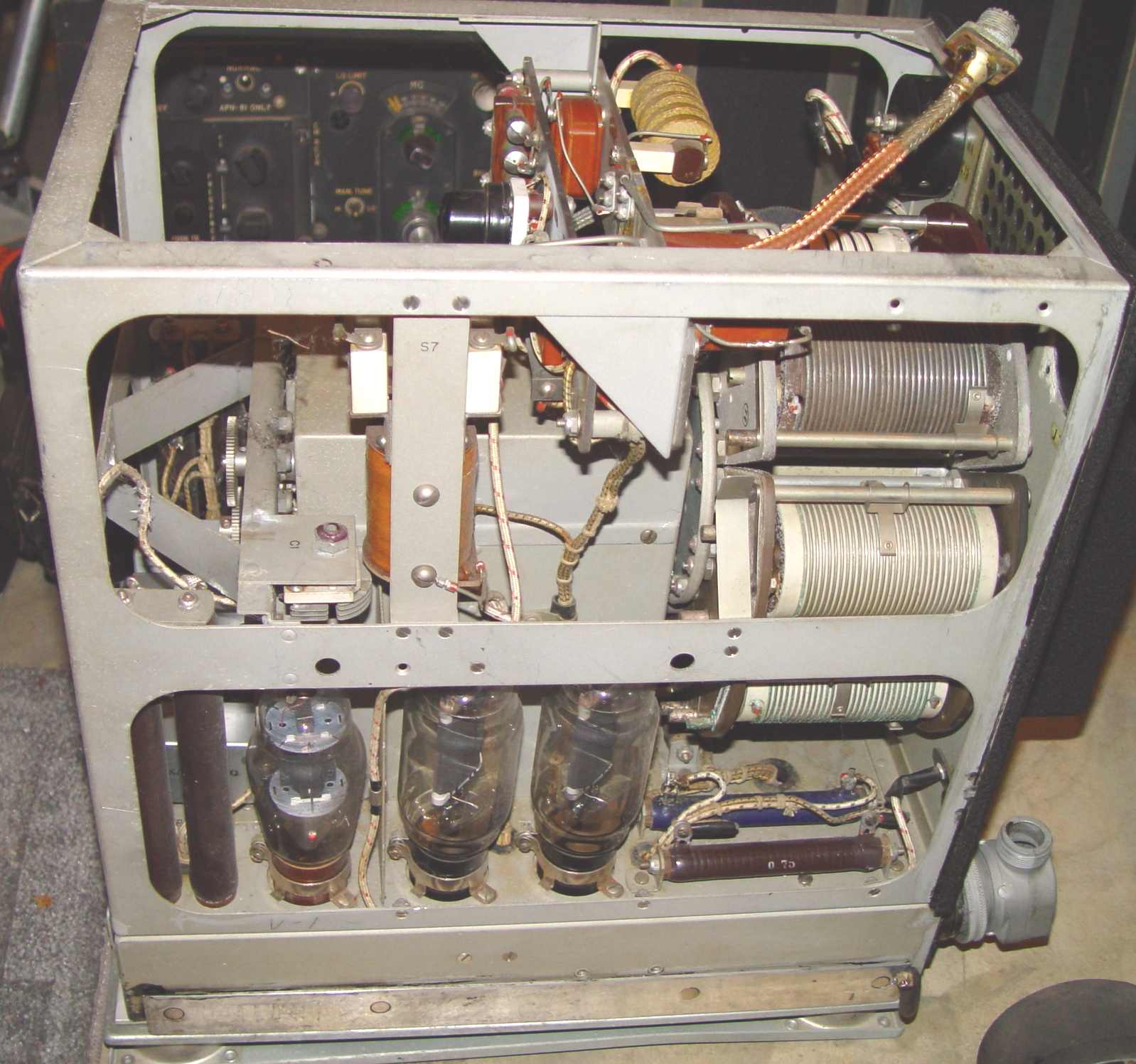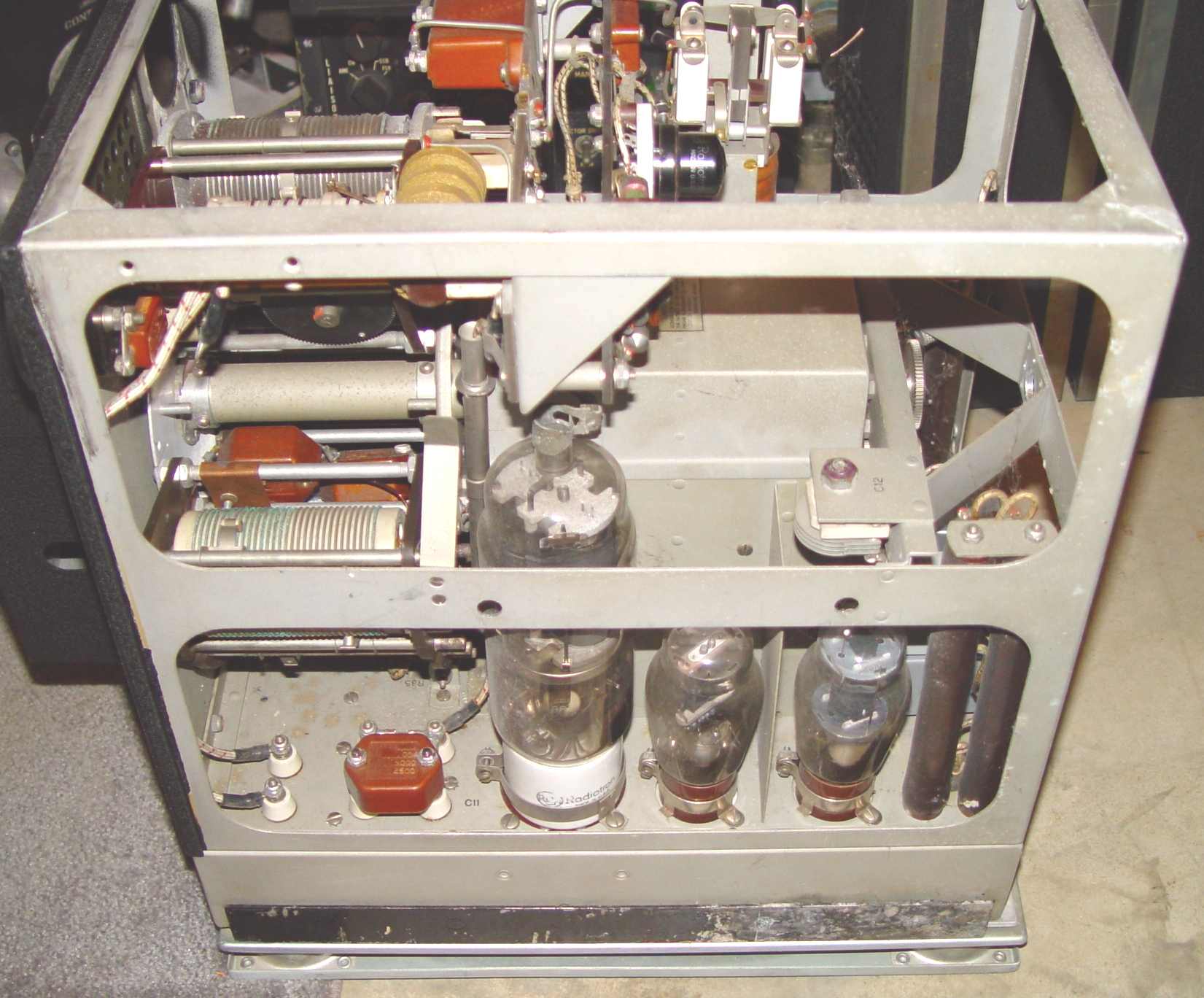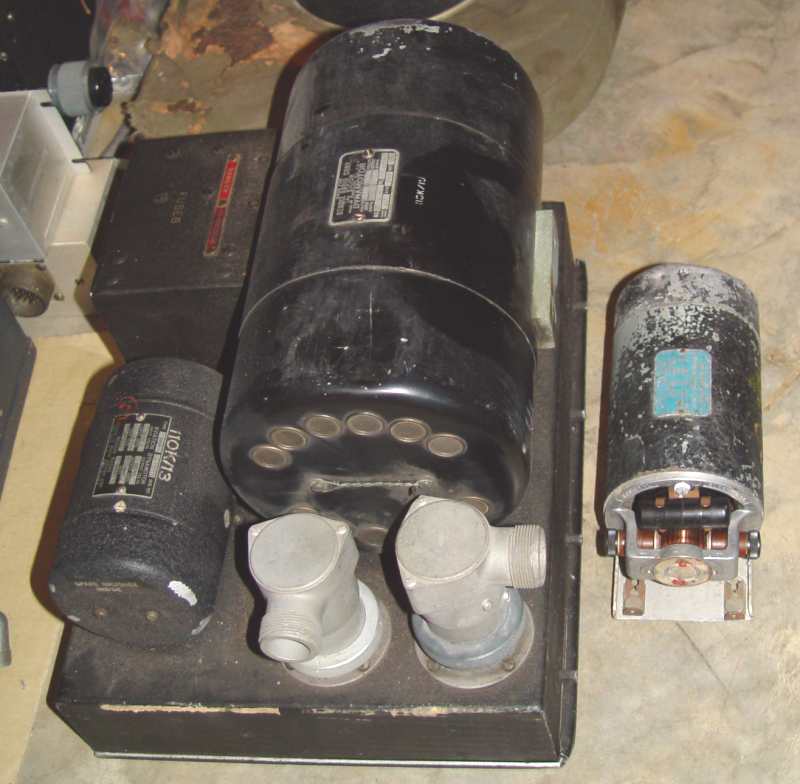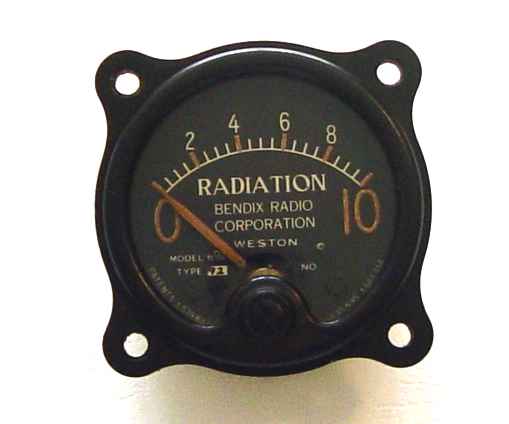Probably because of commercial aircraft lineage, a late 1930s Bendix transmitter was used in some Navy transport aircraft as another high power alternative to the Navy GO series, (see Navy Day) despite the continued production of the Westinghouse GO (-9 by then). The TA-2J under restoration below was a significant improvement over the GO-* series in that it was capable of eight remotely selected crystal controlled channels and was significantly smaller and lighter, despite using the same 803 PA. Channel selection was accomplished with a large motor driven rotating drum, containing all the tuning elements except the crystals. No tank capacitor was used, the designers having reached the logical conclusion that aircraft antennas provide enough capacitance to serve that function except for low frequency work. Schematics and system diagram are shown at TA-2J Schematics. Fabrication of the unusual antenna terminal used by this set and a couple of others is shown at An Oddball Way to Attach an Antenna.
As you can see, there is really no capability for local control of the set. An emergency crank handle for changing frequencies is to the right of the doghouse "autotune" motor box, but it isn't what you would call user friendly - what seems like a thousand turns gets you to the next channel. Unlike the GO series, which was CW only, this transmitter has a built-in modulator. The antenna output terminal is installed in a Micalex plate in the hole at upper left, using a 1/4 turn Dzus fastener. This particular transmitter had the output connector converted with shielded coax and an SO-239, probably by a ham radio operator, and will be restored to the original configuration. Below are some additional views of the set interior.



As usual with aircraft sets, there was a separate MF tuner that could be used when necessary - the MT-36 series, a box that was almost as large as the transmitter itself. The one below is a C model. Like the main transmitter, this one could be switched remotely with the MT-34 control box below it, coordinated using presets with the transmitter channels selected.



This is the rather bulky MP-10 dynamotor set designed for the TA-2* and RA-1* transmitter/receiver pair. The small dynamotor to the right is a DM-33 command set transmitter dynamotor for scale.

Finally, I picked up this odd little item below from a hamfest table as a curiosity, not knowing at the time what set it supported. Recently I discovered it was a part of the TA-2J series as an optional component. I was vaguely thinking nuclear radioactivity at the time I first saw it, but of course it is simply an arbitrary 0-10 scale for antenna voltage picked off by a resistance divider and rectified by a 6H6 duodiode in the transmitter. It actually only provides an uncalibrated indication of RF voltage presence on the RF output connector, not antenna current like the Bendix MT-33 remote antenna current meter does. The transmitter selector switch must be in the DIODE position to connect the transmitter to the remote radiation meter. Alternatively, one can plug the built-in meter on the transmitter panel into the GRID jack on the lower middle part of the transmitter and use the DIODE switch position to make the same measurement. Plugging in the transmitter panel meter temporarily disconnects the remote meter (if used). The MT-36 also has an RF output meter on its front panel, but paradoxically it is an RF current meter - not voltage like the other two! Why Bendix introduced this particular type of remote indicator is lost in the mists of time, but it may have derived from contract specifications by the British..."radiation" seems more like a Commonwealth term than U.S. military practice, which tends to be more like "RF Output", or some variation. I suppose sometimes it's good to know there is at least RF power being fed to the antenna, but a simple voltage indication wasn't a very common feature in aircraft transmitters.
